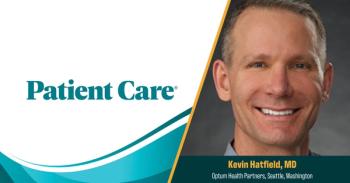
Questioning Medicine: The Vitamin D Craze
The verdict is in: there’s not enough evidence to support screening of asymptomatic individuals for low vitamin D. Here: a look behind the curtain.
Now that the vitamin D research fires have begun to die down, I wanted to look into this apparent health fad to see what, if any, evidence came from the intense focus on this particular supplement. In 2012 alone, there were more than 3600 publications in
In the end, I think an overwhelming lack of definitive evidence was, in and of itself, the conclusion. We did, however, learn a few things about screening for hypovitaminosis D, potential outcomes associated with it, and potential benefits from treatment.
Screening
Just this week, the US Preventive Services Task Force (USPSTF) said there was
The main harm associated with testing for hypovitaminosis D is cost. Even though testing may hover around the $100 range, repeat non–evidence-based testing among several groups on an already strained health care system could redirect valuable health care dollars away from patients with other illnesses.
Causes of Hypovitaminosis D
Some of the most common causes of vitamin D deficiency are believed to be:
- Inadequate exposure to sunlight (sunscreen or dark skin)
- Obesity
- Fat malabsorption syndrome (eg, celiac disease)
- Bariatric surgery
- Nephrotic syndrome (vitamin D bound to albumin)
- Drug catabolism (HIV medications and anticonvulsants)
- Granuloma-forming disorders, lymphomas, and primary hyperparathyroidism
Levels
In patients younger than 18, less than 20 ng/mL is considered deficient, and 20 ng/mL or greater is optimal (
A more mainstream theory is that levels below 50 nmol/L lead to increased bone turnover and/or parathyroid hormone (PTH). There is a possibility that levels above 75 nmol/L may contribute to fewer falls and fractures.
However, this study could be making one of the subtle mistakes that we find with the “retrospect-o-scope.” The elevated baseline level correlates with reduced bad outcomes; therefore, if we artificially elevate this level they will have a benefit like those that are naturally elevated.
Treatment for Fracture Risk Reduction
The USPSTF acknowledged the recommendations of WHO and IOM for the daily intake of calcium and vitamin D for overall health, but not for fracture prevention.
Rather,
The USPSTF actually recommends against vitamin D and calcium supplementation for fracture prevention in one of the most common outpatient candidates:
Harms of supplementation in the
ACTION POINTS
- The US Preventive Services Task Force (USPSTF) said there was insufficient evidence to support screening asymptomatic individuals for low vitamin D.
- Note that the author recommends efforts to prevent low vitamin levels in our patients by treating the underlying disease process and by educating them about food, reasonable sunlight exposure, and other interventions to allow their bodies to have “naturally” elevated levels of vitamin D.
Treatment Levels
The World Congress on Osteoporosis, Osteoarthritis and Musculoskeletal Disease found that supplementation of vitamin D had to reach >800 IU daily to differ from placebo.
The
- Is easy to obtain at most pharmacies
- Will get at least 97% of people above 30 ng/mL
- Will get most people above 40 ng/mL, and close to around 50 ng/mL
- Will not cause anyone to get toxic levels
These are excellent boundaries if one is going to supplement for general health. But, some of the questions yet to be answered by this 2012 generation of studies are:
- If we supplement low vitamin D with a mid-priced supplement, will this improve a patient's outcome? Or is the theory of supplemental vitamin D based on the ideal levels that exist in people with naturally elevated levels of vitamin D?
- Is it even possible to reach the same quality outcomes in the supplemental group and the naturally elevated group?
- Will dietary intake of vitamin D lead to a better outcome than supplement intake in patients?
- Is the lab value of vitamin D of >90 nmol/L in a patient that only has dietary and sunlight exposure as their source of vitamin D the only way to get the health benefit?
These are the questions that the Vitamin D Council, USPSTF, WHI, NHANES III, Cochrane Collaboration, DIPART group and others have been unable to answer.
Risk Factor Reduction
We should strive to prevent low vitamin levels in our patients by treating the underlying disease process. Educating our patients about food, reasonable sunlight exposure, and other interventions to allow their bodies to have “naturally” elevated levels of vitamin D will empower them to take part in their health.
As we support a healthy weight and lifestyle in each patient, especially in the obese, discuss the risks/benefits of bariatric surgery, and attempt to control the various disease processes that may contribute to malabsorption, we are standing on the best available evidence.
Bottom line: Sunlight exposure of 10 minutes
That,
The Questioning Medicine PodCast on Vitamin D can be found
This article was first published on
Newsletter
Enhance your clinical practice with the Patient Care newsletter, offering the latest evidence-based guidelines, diagnostic insights, and treatment strategies for primary care physicians.


















































































































































































































































































